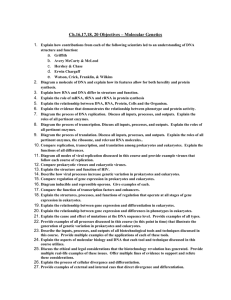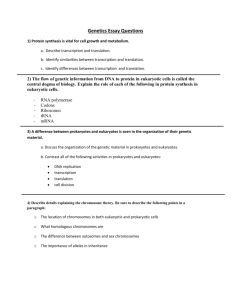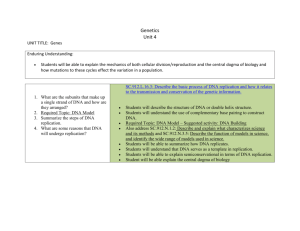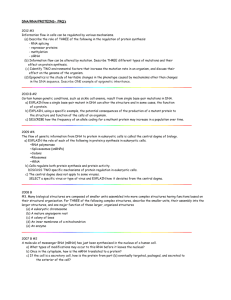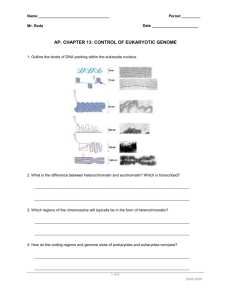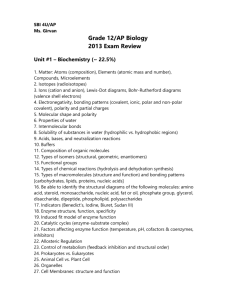Molecular Genetics Study Guide
advertisement
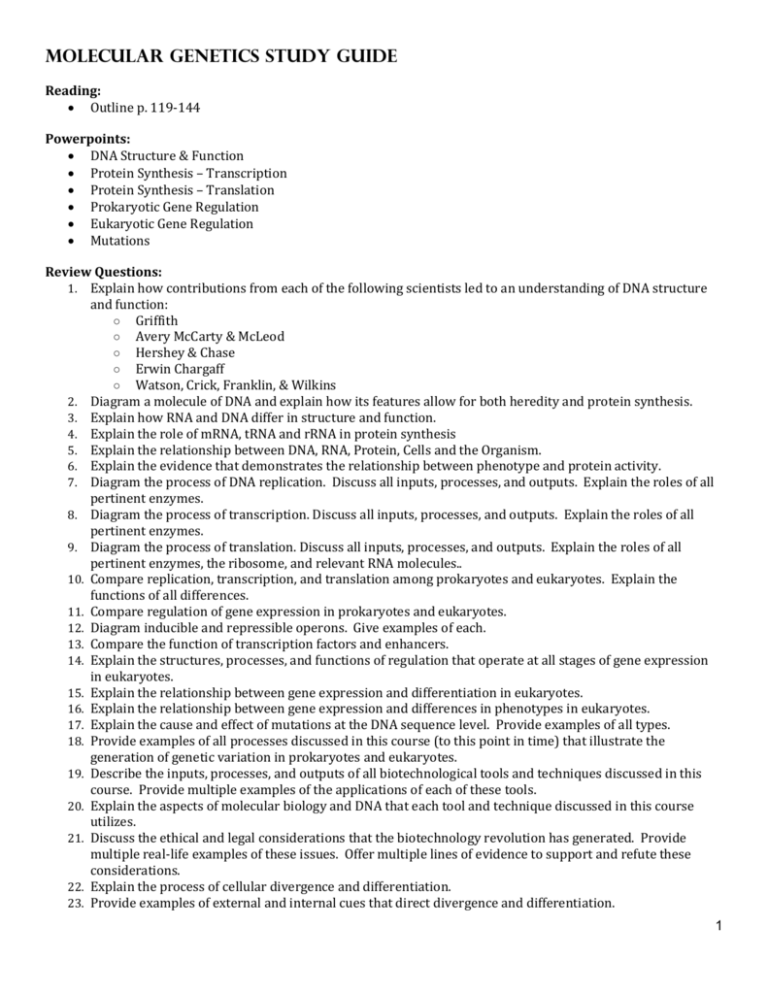
Molecular Genetics Study Guide Reading: Outline p. 119-144 Powerpoints: DNA Structure & Function Protein Synthesis – Transcription Protein Synthesis – Translation Prokaryotic Gene Regulation Eukaryotic Gene Regulation Mutations Review Questions: 1. Explain how contributions from each of the following scientists led to an understanding of DNA structure and function: ○ Griffith ○ Avery McCarty & McLeod ○ Hershey & Chase ○ Erwin Chargaff ○ Watson, Crick, Franklin, & Wilkins 2. Diagram a molecule of DNA and explain how its features allow for both heredity and protein synthesis. 3. Explain how RNA and DNA differ in structure and function. 4. Explain the role of mRNA, tRNA and rRNA in protein synthesis 5. Explain the relationship between DNA, RNA, Protein, Cells and the Organism. 6. Explain the evidence that demonstrates the relationship between phenotype and protein activity. 7. Diagram the process of DNA replication. Discuss all inputs, processes, and outputs. Explain the roles of all pertinent enzymes. 8. Diagram the process of transcription. Discuss all inputs, processes, and outputs. Explain the roles of all pertinent enzymes. 9. Diagram the process of translation. Discuss all inputs, processes, and outputs. Explain the roles of all pertinent enzymes, the ribosome, and relevant RNA molecules.. 10. Compare replication, transcription, and translation among prokaryotes and eukaryotes. Explain the functions of all differences. 11. Compare regulation of gene expression in prokaryotes and eukaryotes. 12. Diagram inducible and repressible operons. Give examples of each. 13. Compare the function of transcription factors and enhancers. 14. Explain the structures, processes, and functions of regulation that operate at all stages of gene expression in eukaryotes. 15. Explain the relationship between gene expression and differentiation in eukaryotes. 16. Explain the relationship between gene expression and differences in phenotypes in eukaryotes. 17. Explain the cause and effect of mutations at the DNA sequence level. Provide examples of all types. 18. Provide examples of all processes discussed in this course (to this point in time) that illustrate the generation of genetic variation in prokaryotes and eukaryotes. 19. Describe the inputs, processes, and outputs of all biotechnological tools and techniques discussed in this course. Provide multiple examples of the applications of each of these tools. 20. Explain the aspects of molecular biology and DNA that each tool and technique discussed in this course utilizes. 21. Discuss the ethical and legal considerations that the biotechnology revolution has generated. Provide multiple real-life examples of these issues. Offer multiple lines of evidence to support and refute these considerations. 22. Explain the process of cellular divergence and differentiation. 23. Provide examples of external and internal cues that direct divergence and differentiation. 1
